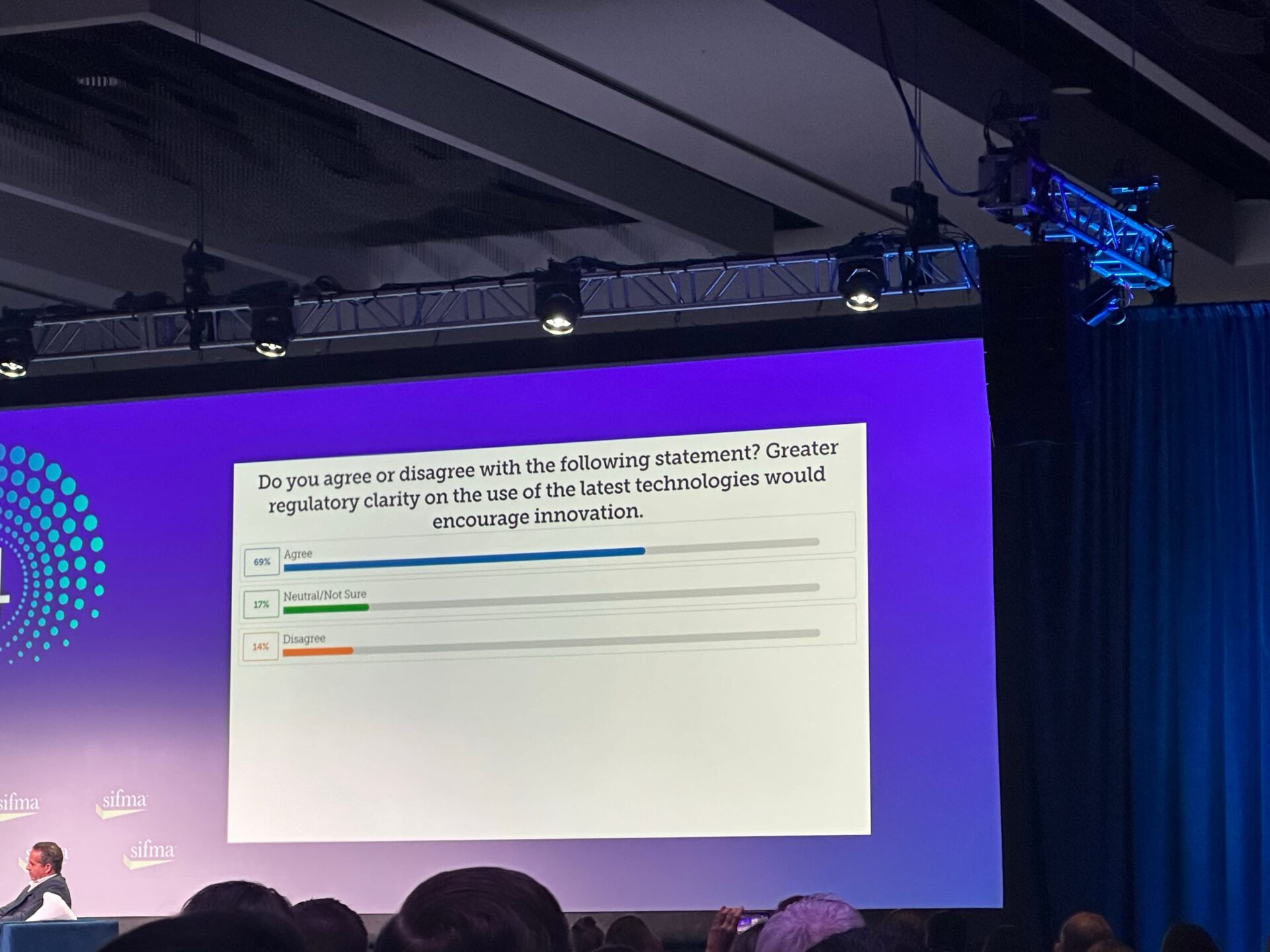Insights
Shaping the Future of Funds: Taskize at FundsCo 2025
Read the key trends shaping the future of funds
Taskize recently attended SIFMA’s 51st Annual Operations Conference and Exhibition in San Diego.

The Taskize team was at the event to share the latest updates on how we’re supporting clients with their exception resolution, workflow efficiency and trade settlement processes.
After engaging with experts and attending discussions, we came away with six key takeaways:
1. Interest rate reductions and market implications
The Federal Reserve Chair Jay Powell remarked, “The time has come for policy to adjust,” during his address at the Jackson Hole conference last August.
Powell is navigating the delicate task of achieving a rare soft landing, as emerging vulnerabilities in the labour market become apparent. This represents a significant change in tone from two years ago when, at the same event, he expressed concerns about potentially pushing the US economy into a recession, famously referring to the need to “bring the pain.”
This pivot suggests a readiness to respond to further labour market weaknesses, potentially paving the way for more aggressive interest rate cuts. At the conference, one speaker highlighted the possibility of a total reduction of 100 basis points by the year’s end.
For financial institutions, adapting to such changes requires agility in trade processing and proactive management of exceptions, particularly as the market adjusts to potential new economic conditions.
2. Treasury clearing: The importance of industry collaboration
The complexity of the SEC’s Treasury clearing mandate has been recognised as exceeding that of the transition to T+1. However, valuable lessons can be drawn from the T+1 transition, particularly the importance of industry-wide collaboration.
Feedback from industry participants is crucial, with clear responses provided regarding options for clearing models, such as sponsor or agency, and the application of done-away clearing.
Effective collaboration and clear communication between stakeholders are essential to streamline processes, mitigate risk, and drive efficiency. Taskize’s platform is built to facilitate such collaboration, ensuring seamless communication between teams, firms, and regulators as they tackle new clearing models and adapt to regulatory changes.
3. Transformation: Balancing innovation and compliance
Transformation was a key theme at SIFMA, especially the delicate balance between innovation and regulatory compliance. With firms now directing around 75% of expenditure toward compliance, the challenge is to rebalance priorities without sacrificing the need for operational agility.
The decision to build or buy depends on a firm’s competitive edge; building is preferred when it provides an advantage, but purchasing is more cost-effective for commoditised or mature products as costs can be shared across firms.
Regulatory clarity is essential to foster innovation – transparency is crucial, and as regulators are partners with financial services firms, the more firms engage, the better the outcomes will be. 
The past eighteen months have underscored the inevitability of cyber events, highlighting their significance as a crucial element of operational risk management programmes.
Panellists emphasised the importance of constant vigilance through preparation, scenario planning, and testing. This vigilance should extend not only to internal systems but also to those of various stakeholders, including vendors and even their subcontractors. Firms were advised to establish alternative solutions and predefined criteria for disconnecting and reconnecting with affected vendors.
5. Generative AI: The future of efficiency
Generative AI was another focal point of the conference. While AI is not new, the ease of use provided by generative models has caught many by surprise.
The introduction of probabilistic models that incorporate randomness presents unique opportunities and challenges for financial services firms. For now, many are still in the exploration phase, weighing the benefits of automation against the unpredictability of such systems.
6. Regulatory developments: Adapting to T+1
The successful transition to T+1 demonstrates the power of industry collaboration, but the journey doesn’t stop there. Regulators are actively monitoring various metrics post-transition.
Their focus includes issues such as failures at clearing houses, the creation and redemption of securities, same-day allocations, pattern-day trading rules, stock borrowing concerns, and foreign exchange settlement for international traders.